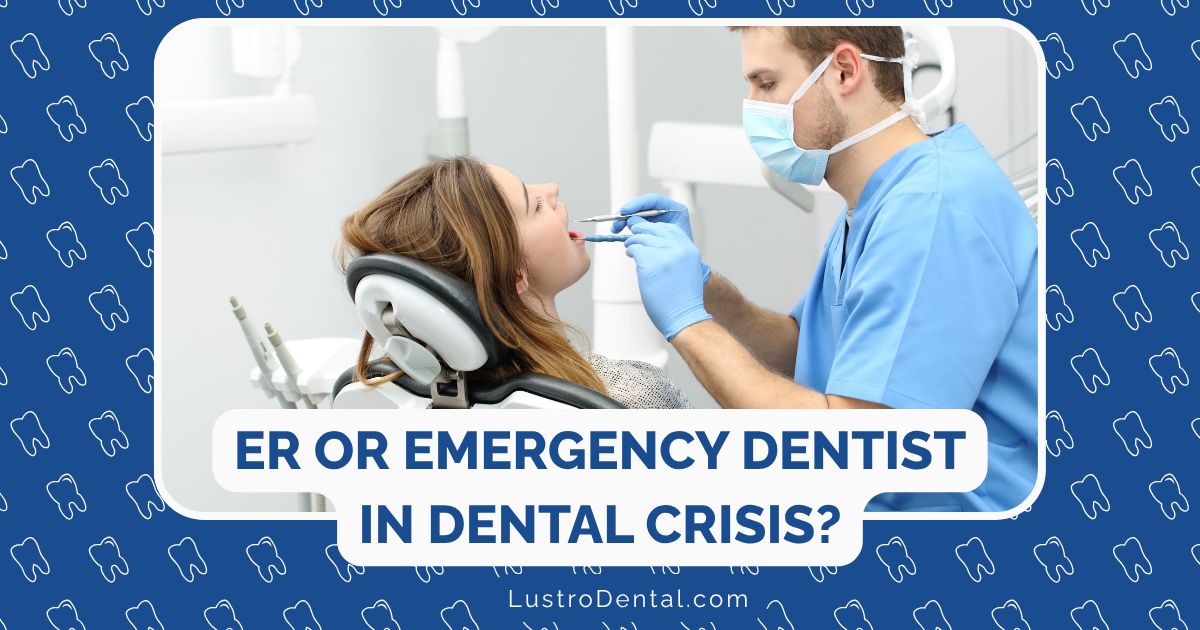After the Emergency: Long-Term Care for Traumatized Teeth

When 12-year-old Alex was hit in the face with a baseball, his front tooth was partially knocked out of position. The emergency dentist repositioned the tooth, splinted it to adjacent teeth for stability, and sent him home with care instructions. “We thought that was the end of it,” his mother Jennifer recalls. “We had no idea that dental trauma requires months—sometimes years—of follow-up care and monitoring.”
Jennifer’s experience is common. While the immediate emergency treatment for dental trauma gets the most attention, the long-term care that follows is equally crucial for successful outcomes. Traumatized teeth require ongoing monitoring and sometimes additional treatments to prevent or address complications that may develop weeks, months, or even years after the initial injury.
In this comprehensive guide, we’ll explore what happens after the emergency phase of dental trauma treatment, including monitoring protocols, potential complications, treatment options, and what patients can expect in their recovery journey.
Understanding Dental Trauma: Beyond the Emergency
Before diving into long-term care, it’s important to understand that dental trauma encompasses a wide range of injuries, each with its own healing timeline and potential complications:
Common Types of Dental Trauma
- Crown fractures: Breaks in the visible portion of the tooth
- Root fractures: Cracks in the tooth root below the gumline
- Luxation injuries: Teeth that are loosened, pushed in, pulled out, or displaced
- Avulsion: Completely knocked-out teeth that have been reimplanted
- Concussion/subluxation: Teeth that have been traumatized but remain in their normal position
Dr. Sarah Chen, a board-certified endodontist with the American Association of Endodontists, explains: “Each type of dental trauma affects the tooth’s supporting structures differently. The pulp (nerve), periodontal ligament, cementum, and surrounding bone may all be damaged to varying degrees, which is why long-term monitoring is so essential.”
The Critical Follow-Up Period: What to Expect
After emergency treatment stabilizes the immediate situation, a structured follow-up protocol begins. This typically involves:
Initial Follow-Up (1-2 Weeks)
The first post-emergency appointment usually occurs within 1-2 weeks and focuses on:
- Assessing initial healing: Checking for signs of infection or complications
- Splint removal: For luxated or avulsed teeth that were stabilized with splints
- Pulp testing: Evaluating the tooth’s nerve response
- Radiographs (X-rays): Looking for early signs of root resorption or other complications
- Treatment adjustments: Modifying the treatment plan based on healing progress
Medium-Term Follow-Up (1-3 Months)
These appointments monitor the progression of healing:
- Continued pulp testing: Tracking changes in the tooth’s vitality
- Additional radiographs: Monitoring for developing complications
- Aesthetic considerations: Addressing discoloration or other cosmetic concerns
- Functional evaluation: Assessing bite and tooth mobility
Long-Term Follow-Up (6 Months to 5+ Years)
Long-term monitoring is crucial for detecting delayed complications:
- Annual or semi-annual evaluations: Regular check-ups specifically focused on the traumatized teeth
- Periodic radiographs: Usually taken at 6 months, 1 year, and then annually for at least 5 years
- Pulp vitality reassessment: Continued monitoring of nerve health
- Intervention as needed: Addressing any complications that develop
According to the International Association of Dental Traumatology guidelines, traumatized teeth should be monitored for a minimum of 5 years, with some cases requiring lifetime follow-up.
Potential Complications: What Can Develop Over Time
Even with proper emergency care, traumatized teeth can develop complications months or years later. Understanding these possibilities helps patients recognize warning signs and seek timely intervention.
Pulp Necrosis (Death of the Nerve)
What it is: The dental pulp (nerve and blood vessels) dies due to trauma-induced damage.
Timeline: Can occur within weeks or develop gradually over months.
Warning signs:
- Tooth discoloration (usually darkening or graying)
- Pain or sensitivity to pressure
- Swelling or pimple-like bump on the gum
- Negative response to pulp testing
Treatment:
- Root canal therapy to remove the necrotic pulp and prevent infection
- Internal bleaching may address discoloration after root canal treatment
Dr. Robert Wilson, an endodontist specializing in dental trauma, notes: “Pulp necrosis is the most common complication following dental trauma, occurring in approximately 20-40% of cases, depending on the severity of injury. Early detection through regular monitoring is key to preventing more serious complications like abscess formation.”
Root Resorption
What it is: The body’s cells begin to break down and absorb the tooth structure.
Types and timelines:
- External inflammatory resorption: Can appear within weeks to months
- Replacement resorption (ankylosis): May take months to years to become evident
- Internal resorption: Usually develops slowly over months to years
Warning signs:
- Often asymptomatic in early stages (detected on X-rays)
- Progressive tooth mobility
- Pink spot on the crown (in some internal resorption cases)
- Ankylosis (tooth becomes fused to bone and doesn’t move)
Treatment options:
- Root canal therapy for inflammatory resorption
- Surgical interventions for some cases
- Monitoring for slow-progressing cases
- Eventually, extraction and replacement may be necessary for severe cases
Research published in the Journal of Endodontics indicates that root resorption can be arrested in many cases if detected early, highlighting the importance of regular radiographic monitoring.
Pulp Canal Obliteration (PCO)
What it is: The pulp chamber and root canal gradually fill with hard tissue (dentin), narrowing or completely blocking the canal space.
Timeline: Develops gradually over months to years.
Signs and symptoms:
- Progressive yellowing of the tooth
- Decreased response to pulp testing
- Usually asymptomatic
- Visible narrowing of the pulp chamber and canal on X-rays
Management:
- Often just monitoring if no symptoms or infection are present
- Preventive root canal treatment in some cases
- Root canal therapy if infection develops (technically challenging due to canal narrowing)
According to Dr. Lisa Rodriguez of the American Academy of Pediatric Dentistry, “PCO is generally considered a sign of pulp healing rather than a pathological condition. However, these teeth require monitoring because approximately 10-20% will eventually develop pulp necrosis.”
Ankylosis and Infraposition
What it is: The tooth fuses directly to the surrounding bone (ankylosis) and may appear to sink below the level of adjacent teeth (infraposition) as growth continues.
Timeline: Can begin within months but becomes more evident over years, especially in growing children.
Signs:
- Tooth appears shorter than adjacent teeth
- Metallic sound when tapped (percussion)
- No mobility
- No normal periodontal ligament space visible on X-rays
Management options:
- Monitoring in adults with completed growth
- Decoronation (removing the crown while leaving the root) in growing patients
- Prosthetic build-up to maintain aesthetics
- Eventually, extraction and replacement with implant after growth completion
Root Fractures: Delayed Healing or Non-Healing
What it is: Horizontal or oblique fractures of the root that fail to heal properly.
Timeline: Healing assessment typically begins at 3 months with ongoing monitoring.
Signs of complications:
- Mobility of the coronal fragment
- Pain or discomfort
- Infection signs (swelling, drainage)
- Visible gap at fracture site on X-rays
Management options:
- Extended splinting for delayed healing
- Root canal treatment of the coronal segment
- Extraction of the coronal segment while maintaining the apical portion
- Complete extraction if both segments are compromised
Treatment Approaches: Addressing Long-Term Complications
When complications develop, several treatment approaches may be considered:
Endodontic Treatment (Root Canal Therapy)
Root canal therapy is often necessary when pulp necrosis occurs or to manage certain types of root resorption.
Timing considerations:
- Emergency root canal: Performed immediately for severe cases with signs of infection
- Early intervention: Within weeks of injury if pulp necrosis is evident
- Elective treatment: For cases of pulp canal obliteration or preventive treatment
- Delayed treatment: When complications develop months or years later
Special considerations for traumatized teeth:
- Teeth with incomplete root development may require specialized techniques
- Calcified canals from PCO present technical challenges
- Resorption cases may require additional materials or approaches
Regenerative Endodontic Procedures
For immature teeth with incomplete root development, regenerative approaches aim to promote continued root development.
What it involves:
- Disinfection of the canal system
- Stimulation of bleeding from the periapical tissues
- Placement of scaffolds and/or growth factors
- Placement of a biocompatible seal
Benefits:
- Allows for continued root development
- Strengthens thin dentinal walls
- Potentially restores tooth vitality
Dr. Michael Johnson, a researcher in regenerative endodontics, explains: “These procedures represent a paradigm shift in managing traumatized immature teeth. Rather than simply removing the damaged pulp, we’re creating conditions that allow for continued root development and healing.”
Surgical Approaches
Some complications require surgical intervention:
- Apicoectomy: Surgical removal of the root tip and placement of a retrograde filling
- Intentional replantation: Extraction, treatment outside the mouth, and reimplantation
- Decoronation: Removal of the crown while preserving the root in the alveolar bone
- Periodontal surgery: Addressing gum recession or other periodontal complications
Prosthetic Solutions
When teeth cannot be saved or develop significant aesthetic issues:
- Direct composite bonding: Repairing minor fractures or addressing discoloration
- Veneers: Masking discoloration or reshaping teeth
- Crowns: Protecting weakened teeth or improving aesthetics
- Implants: Replacing teeth that cannot be saved
- Bridges: Fixed or removable replacements for lost teeth
The Patient Experience: What to Expect in Your Recovery Journey
Understanding what to expect during recovery can help patients navigate this sometimes lengthy process.
Healing Timelines
While individual cases vary significantly, general healing timelines include:
- Pulp healing: Assessment typically begins at 3 months
- Periodontal ligament healing: Initial healing within 2-4 weeks, complete remodeling over 6-12 months
- Fracture healing: Evaluation at 3 months, with monitoring continuing for at least a year
- Root resorption monitoring: Begins at 2-3 weeks and continues for at least 5 years
Managing Discomfort and Sensitivity
Traumatized teeth may experience changing sensitivity patterns:
- Initial hypersensitivity: Common in the first few weeks
- Transient sensitivity: May come and go during healing
- Pressure sensitivity: Often indicates pulp inflammation
- Pain on biting: May suggest root fracture or ligament injury
Dr. Wilson advises: “Patients should report any new or changing pain patterns promptly. While some discomfort during healing is normal, significant pain often signals a developing complication that requires intervention.”
Aesthetic Considerations
Many patients are concerned about the appearance of traumatized teeth:
- Discoloration: May be temporary or permanent
- Position changes: Slight shifts may occur during healing
- Gum recession: Can develop over time, affecting aesthetics
- Cosmetic treatments: Often delayed until healing is complete and stability is confirmed
Psychological Aspects of Dental Trauma Recovery
The emotional impact of dental trauma is often overlooked but significant:
- Dental anxiety: May develop or worsen after traumatic dental injuries
- Self-consciousness: About appearance or function
- Treatment fatigue: From multiple appointments and procedures
- Financial stress: Due to ongoing treatment costs
Jennifer, Alex’s mother, reflects: “The psychological impact was something we hadn’t anticipated. Alex became very self-conscious about his smile and anxious about follow-up appointments. Finding a dentist who understood these aspects and provided emotional support was just as important as their technical expertise.”
Special Considerations for Different Age Groups
The approach to long-term care varies significantly based on the patient’s age:
Children with Primary (Baby) Teeth
- Monitoring approach: Often less aggressive intervention
- Growth concerns: Damage to primary teeth can affect permanent teeth
- Behavior management: May require specialized approaches for young children
- Transition planning: Coordinating care as permanent teeth erupt
Children and Adolescents with Permanent Teeth
- Growth considerations: Continued facial growth affects treatment planning
- Root development: Immature teeth have special treatment needs and better healing capacity
- Orthodontic implications: Coordination with orthodontic treatment often necessary
- Long-term planning: Considering lifetime needs for young patients
Adults
- Aesthetic priorities: Often higher concern for appearance
- Restorative considerations: Existing dental work may complicate treatment
- Systemic health factors: Medical conditions may influence healing and treatment options
- Stability: Better long-term predictability once healing is established
Alex’s Journey: A Case Study in Long-Term Care
Returning to Alex’s story provides a real-world example of the long-term care journey:
After the emergency treatment for his luxated front tooth, Alex’s follow-up care included:
2-week follow-up: Splint removal, initial pulp testing (showed delayed response), and first follow-up X-ray.
1-month follow-up: The tooth began showing signs of discoloration and had no response to pulp testing, indicating likely pulp necrosis.
6-week mark: Root canal therapy was performed to prevent infection and further complications.
3-month follow-up: X-rays showed good healing with no signs of resorption.
6-month and 1-year follow-ups: Continued monitoring with no complications.
Current status (3 years later): Alex continues annual monitoring. The tooth required internal bleaching to address discoloration but has remained stable with no signs of resorption or other complications.
“We now understand that dental trauma is a long-term journey, not a one-time emergency,” Jennifer shares. “The follow-up care was just as important as the emergency treatment in saving Alex’s tooth.”
Creating a Long-Term Care Plan: Partnership with Your Dental Team
Successful long-term management of traumatized teeth requires a collaborative approach:
Finding the Right Providers
Depending on the specific trauma and complications, long-term care may involve:
- General dentist: For regular monitoring and coordination of care
- Endodontist: Specializing in pulp-related complications and root canal treatments
- Oral surgeon: For surgical interventions when needed
- Periodontist: Addressing gum and supporting tissue concerns
- Prosthodontist: For complex restorative needs
- Orthodontist: When tooth position is affected or orthodontic treatment is planned
Communication and Records
Maintaining comprehensive records is essential:
- Baseline documentation: Initial injury details, treatments, and imaging
- Treatment timeline: Keeping track of all procedures and interventions
- Imaging history: Sequential X-rays showing changes over time
- Provider communication: Ensuring all dental professionals have complete information
Insurance and Financial Planning
The long-term nature of trauma care can have financial implications:
- Insurance coverage: Understanding limitations and maximums
- Phased treatment planning: Spacing necessary procedures
- Future planning: Anticipating potential needs for replacement or additional treatment
- Documentation: Maintaining records for insurance purposes
Conclusion: The Journey of Healing
Dental trauma recovery is not a sprint but a marathon. The emergency treatment is just the beginning of what can be a years-long journey of monitoring, intervention when needed, and ongoing care.
Dr. Rodriguez summarizes: “The success of dental trauma treatment isn’t measured in days or weeks, but in years. With proper emergency care followed by diligent long-term monitoring and appropriate interventions, many traumatized teeth can be maintained for decades or even a lifetime.”
For patients and parents navigating this journey, understanding the long-term nature of trauma care helps set realistic expectations and ensures appropriate follow-through with recommended monitoring and treatments.
As Alex’s case demonstrates, the combination of prompt emergency care, diligent follow-up, appropriate intervention for complications, and ongoing monitoring provides the best chance for long-term success—turning a dental emergency into a story of successful recovery rather than ongoing problems.
Have you experienced dental trauma that required long-term care? We’d love to hear about your experience in the comments below.







